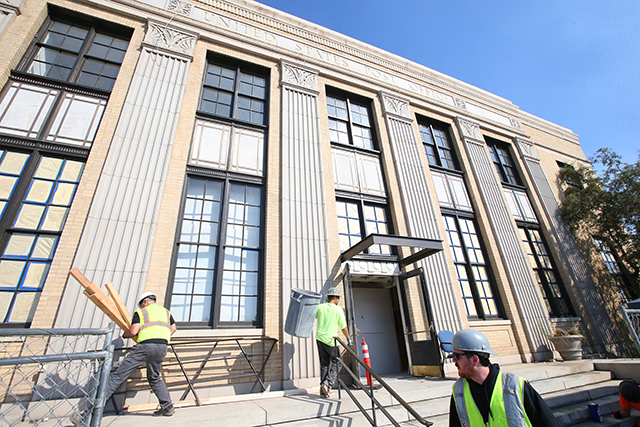Disabled workers offer a clue into employment
Published 12:00 am Friday, March 16, 2018
The rise in the number of Americans not working because of disability was so persistent for two decades that some economists began to hypothesize that the trend would never reverse.
But perhaps it has. Since a peak almost four years ago, that number has steadily fallen, showing its largest decline — in terms of head count and percentage — in at least the last 25 years. It’s good news, but it raises questions about how much further the labor market has to heal.
Trending
The employed share of the population 25 to 54 years old — the age range economists generally consider a person’s prime working years — is almost a full percentage point below where it was on the eve of the Great Recession that began at the end of 2007, and more than 2 percentage points below where it was before the 2001 recession.
One factor was a steady increase in the number of people not participating in the labor force because of health problems or a disability. In 1994, the Bureau of Labor Statistics determined that 4 percent of Americans 25 to 54 were not seeking work because of those reasons. By mid-2014, the number had risen to almost 6 percent.
Economists were especially alarmed because the increase appeared tenacious.
It was rising before the 2001 recession, rose faster in response to the 2001 and 2008 recessions, then kept rising during the recoveries.
But then, it began to fall: slowly at first and then, beginning in 2016, faster. Overall, the number of prime-age people who cite disability as their reason for not working has shrunk by 7 percent since mid-2014.
Who has found jobs?
Trending
The data shows that the decline has come almost entirely from the older half of the prime-age population (that is, people between 40 and 54). The drop has been steeper among the less educated. The number of disabled nonparticipants without a high school diploma fell by 18 percent, versus 4 percent for those with at least a high school diploma. It has been somewhat larger among women (minus 9 percent) than men (minus 6 percent).
About 10 percent of prime-age workers who described themselves as disabled in 2016 had found a job by 2017. This pace of job finding matches the rate in 1999 and 2000, when the labor market was generally tight and healthy.
Even as some people are leaving the category of the disabled nonworking, others are joining it, of course. The rate of people newly describing themselves this way has slowed; it is now similar to the pace just before the Great Recession.
One question is whether these people are finding high-quality jobs.
There is evidence they are. Analysis of Current Population Survey data shows that around two-thirds of the new jobs taken by people who formerly described themselves as disabled have been full time. This group appears to have been more likely than other job finders to find work in manufacturing and construction, and no more likely to be self-employed. On the other hand, over the last three and half years, their wages have been 16 percent lower on average than those of other new job finders.
Note, too, that not all of the people no longer describing themselves as disabled joined the workforce. Some continued not to work but gave a different reason — mostly citing home or family care. Additionally, a small number simply aged out of our 25-to-54 category.
Employment may have more room to grow
There is no guarantee workforce participation will return to its previous levels. And while the risks of an American recession currently appear low, another downturn could arrest or even reverse the current trend.
But at the least, what has happened since 2014 suggests that the declines in prime-age employment since 2001 are not all permanent, and that employment may still have further room to grow if the tight labor market continues.
This would take time, though. At its recent pace of decline, it would take six to eight more years without another recession for the percentage of prime-age people not working because of disability to return to 2000 levels. Added to the nine years of recovery we have already had, that would imply an economic expansion longer than any in American history.
The weakness in prime-age employment is not explained solely by disability. Other reasons for prime-age nonemployment, such as school enrollment, have declined more slowly than disability. Some, such as early retirement, appear to be rising.








